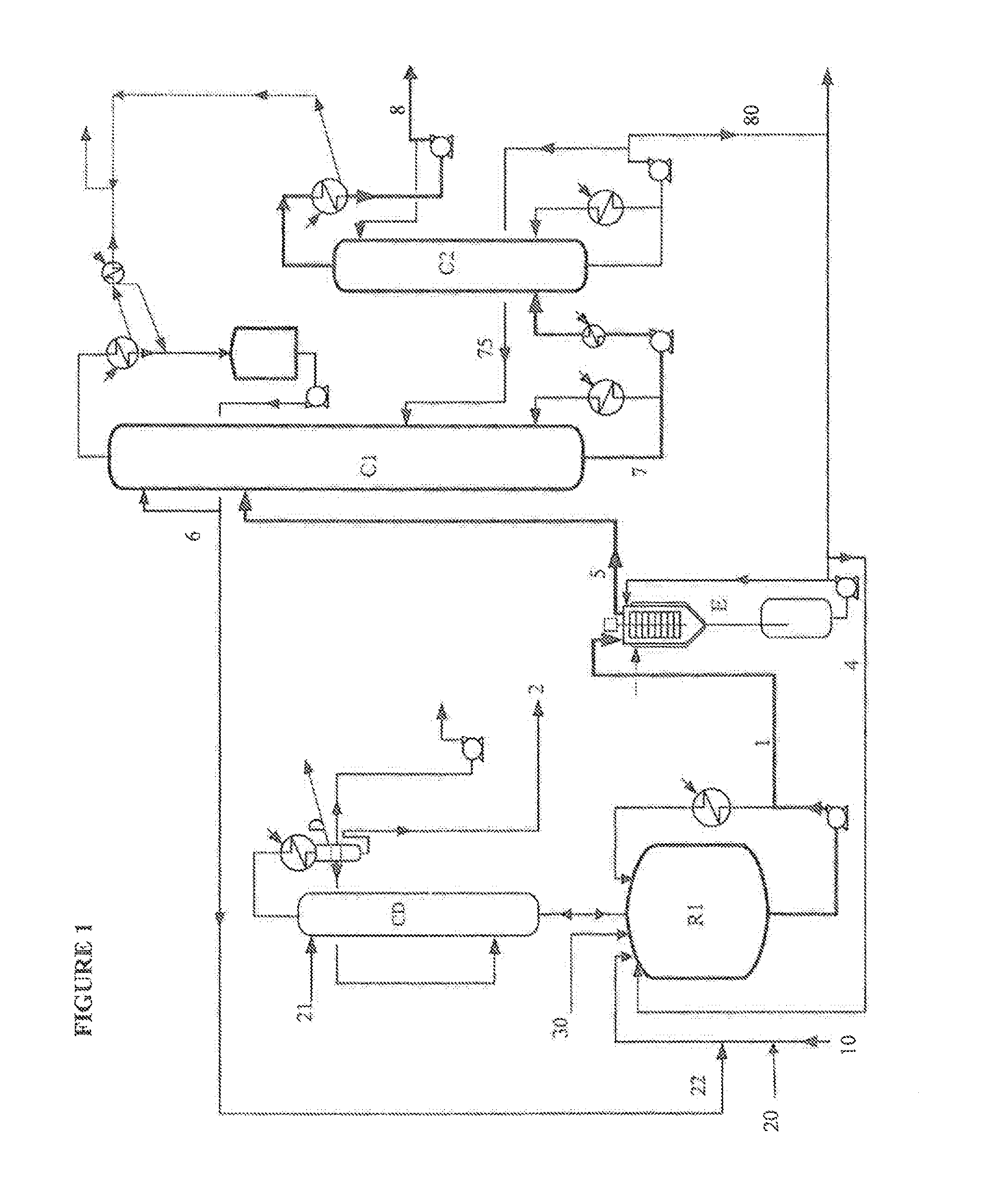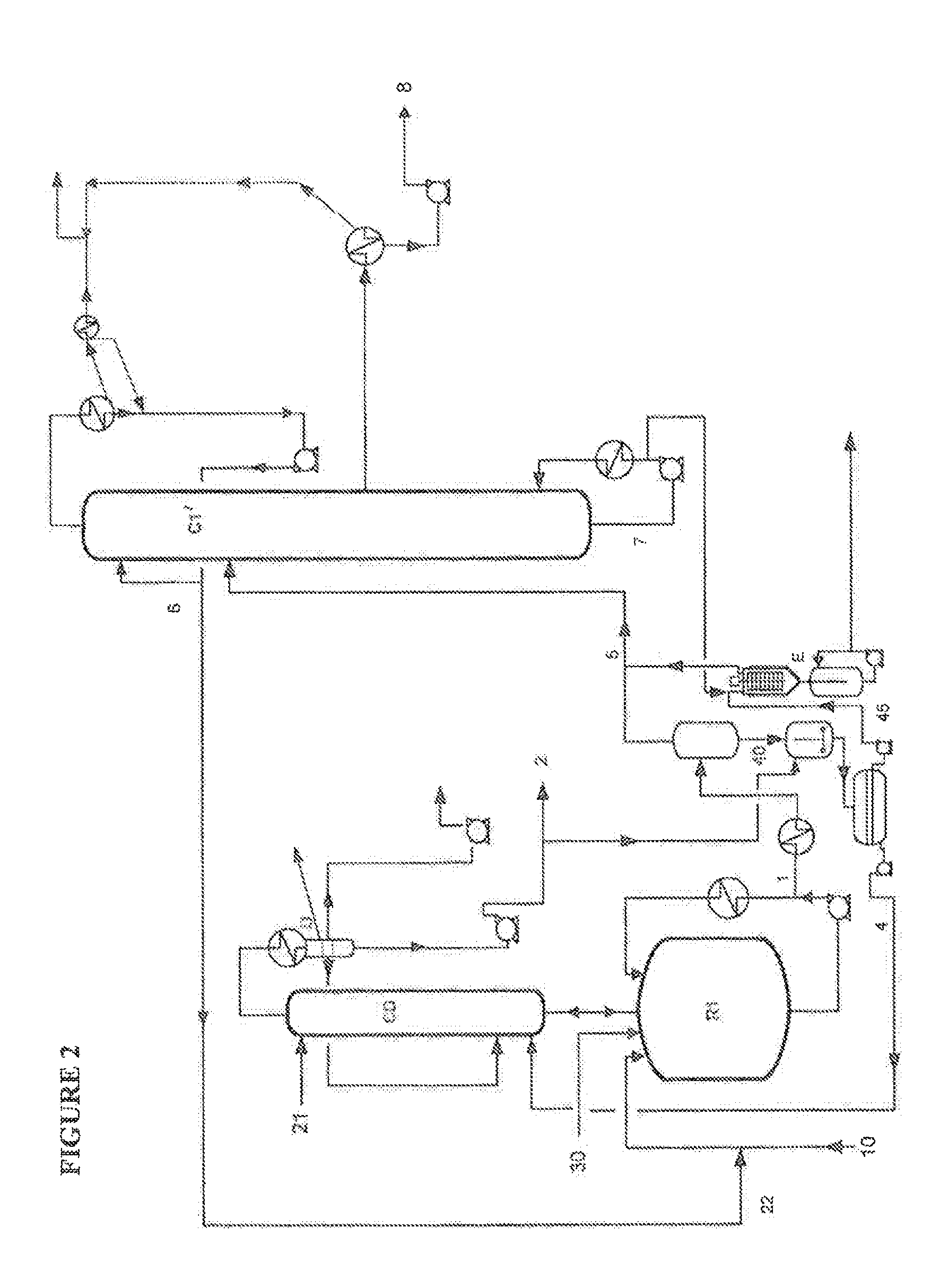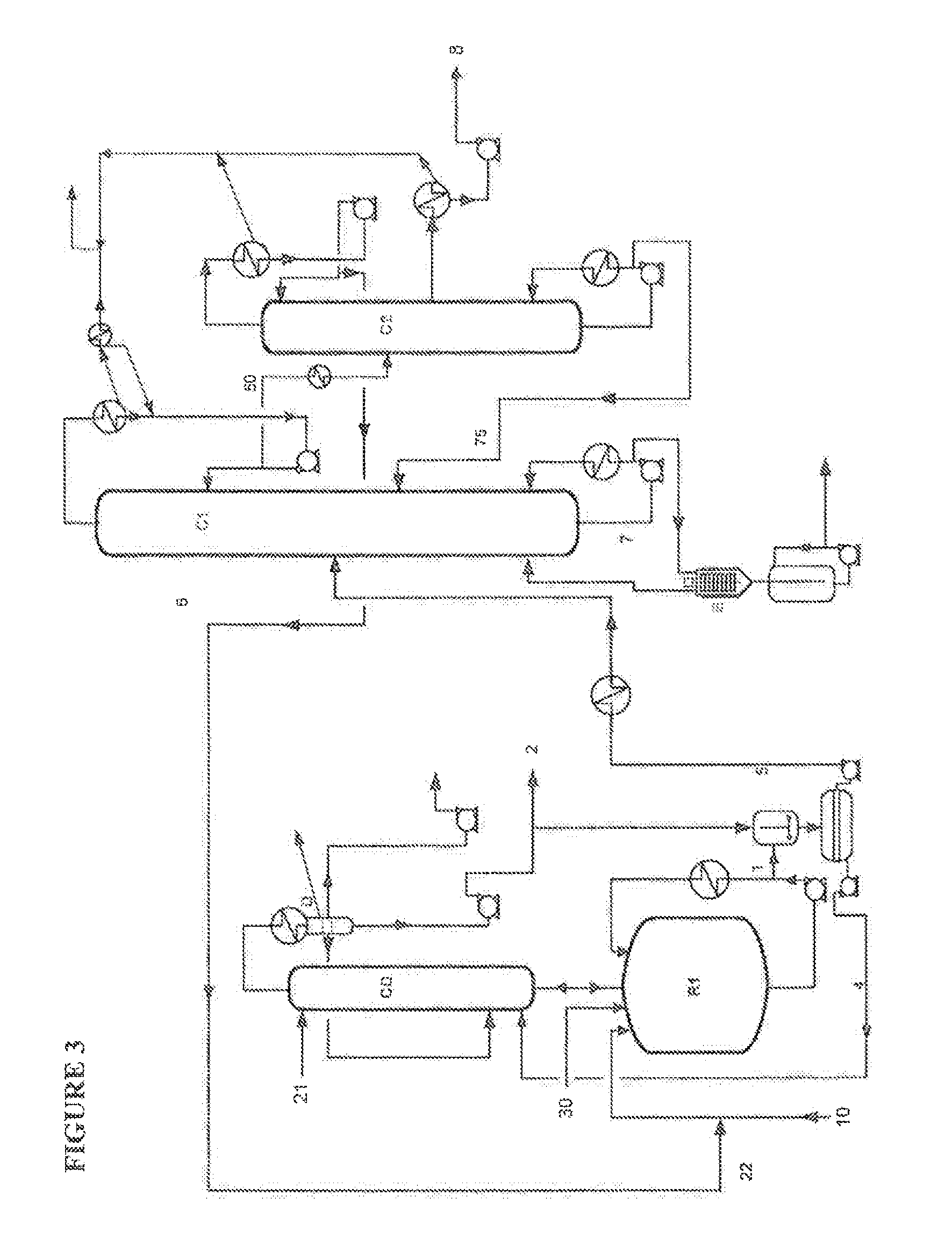Method for producing 2-octyl acrylate by direct esterification
a technology of acrylate and esterification method, which is applied in the separation/purification of carboxylic acid esters, organic chemistry, chemistry apparatus and processes, etc., can solve the problems of relative complexity of the operation, the removal of water generated by the reaction is not complete, and the energy of the reaction is not sufficient to achieve the effect of shifting the equilibrium of the reaction
- Summary
- Abstract
- Description
- Claims
- Application Information
AI Technical Summary
Benefits of technology
Problems solved by technology
Method used
Image
Examples
example 1
According to the Invention, with Reference to the First Embodiment Illustrated by FIG. 1
[0097]2-Octanol, the MSA catalyst, the acrylic acid AA and the PTZ stabilizer are continuously introduced into the reactor R1, by means of a dip pipe. 2-Octanol is also introduced at the top of the distillation column CD which surmounts the reactor. These various constituents are in the weight proportions 63.9 / 1 / 35 / 0.1.
[0098]The esterification reaction is carried out under reduced pressure at 100 mbar at a temperature of 115° C., with a residence time of 3 h. During this step, the equilibrium of the reaction is shifted by taking off the water at the top of the column CD, in the form of a 2-octanol / water heteroazeotrope with a weight composition of 10 / 90 which is subjected, after condensation, to phase separation in a decanter D. The lower aqueous phase A, containing a small amount of 2-octanol, from this decanter is continuously taken off and removed after the 2-octanol has been recovered by mean...
example 2
Comparative
[0113]The reaction crude 1 is sent directly to the distillation column C1. In this case, the presence of the acid catalyst promotes the formation of octenes in the column, and the stream 6 which leaves at the top of column C1 contains 10% of octenes. This stream can therefore not be recycled as it is to the reaction and requires an additional purification in order to remove the octenes.
[0114]The stream 7 at the bottom of the column C1 containing the 2OCTA, the MSA catalyst and the PTZ stabilizer is sent to the distillation column C2 so as to separate, at the top, the purified 2OCTA. In this case, the purity of the 2OCTA is only 98.5%. It contains 1% of octenes and 5000 ppm of 2-octanol. The 2-octyl acrylate obtained cannot be used as a monomer for manufacturing pressure adhesive polymers.
example 3
According to the Invention, with Reference to the Second Embodiment Illustrated by FIG. 2
[0115]The stream 1 from the reactor R1 is preheated at 3 bar eff / 180° C. in an exchanger, and is then expanded at 65 mbar abs / 110° C. in a flash pot. The top stream 5 of the flash pot feeds the distillation column C1′. The flash bottom is mixed with all of the reaction water coming from the top of the column CD. After separation by settling out, an aqueous phase 4 consisting of water and MSA, which is recycled to the bottom part of the distillation column surmounting the reactor, and an organic phase 45 consisting of 2OCTA, unconverted reagents and heavy compounds and stabilizers, are recovered.
[0116]This stream feeds an evaporator E operating at 65 mbar abs / 135° C. The heavy compounds leave at the bottom, and are sent outside the production unit for treatment, and a stream rich in 2OCTA, which is mixed with the stream 5 so as to feed the column C1′, is recovered at the top.
[0117]The column C1′ ...
PUM
 Login to View More
Login to View More Abstract
Description
Claims
Application Information
 Login to View More
Login to View More - R&D
- Intellectual Property
- Life Sciences
- Materials
- Tech Scout
- Unparalleled Data Quality
- Higher Quality Content
- 60% Fewer Hallucinations
Browse by: Latest US Patents, China's latest patents, Technical Efficacy Thesaurus, Application Domain, Technology Topic, Popular Technical Reports.
© 2025 PatSnap. All rights reserved.Legal|Privacy policy|Modern Slavery Act Transparency Statement|Sitemap|About US| Contact US: help@patsnap.com



